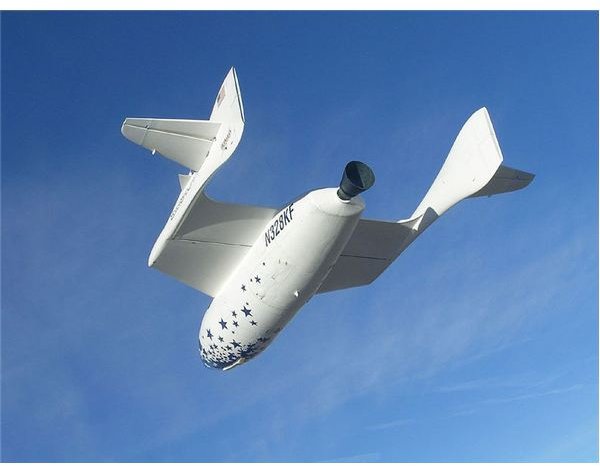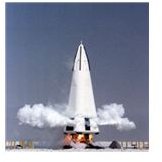Space Tourism Companies: Boldly Going Where Others Have Gone Before
What is Space Tourism?
In a effort to foster greater competition, President Ronald Regan took the first steps in deregulating the commercial space market. The Commercial Space Launch Act was signed into law on October 30, 1984. This was followed in 1990 by the Launch Services Purchase Act. Both pushed for greater initiatives by the private sector into space flight and launch vehicles, giving corporations incentives to work with NASA on privatization of the space program.
Lockheed Martin and Boeing both acquired lucrative contracts to work on new types of launch vehicles to ultimately replace the aging space shuttle fleet.
With added interest in space travel in the general public, several private enterprises were formed to find ways to launch non-astronauts into orbit. This, coupled with the X-Prize, created a slew of new ideas and concepts, many of which are just now achieving fruition with space tourism companies
Above left: Mark Shuttleworth, Space Tourist (Image credit: Dbenbenn at Wikimedia Commons, https://en.wikipedia.org/wiki/File:Mark_Shuttleworth_NASA.jpg, public domain.)
Space Adventures
Established in 1998, Space Adventures has been the most successful provider of space tourism flights since deregulation. Since its inception, the company has sold more than $170 million in space tourist flights and features famous astronauts Buzz Aldrin and Own Garriott, as well as cosmonaut Yuri Usachev, on its advisory board.
The company offers a variety of programs that are not limited to actual space flight. It runs cosmonaut and astronaut training programs; however, Space Adventures is most famous for organizing tourist flights, in unison with the Russian Space Agency and the International Space Station (ISS). To date, they have had six clients purchase tickets to fly aboard the Soyuz spacecraft to the ISS and other orbital space missions.
The firm purchased Zero Gravity Corporation, famous for its use of a Boeing 727 flying in a parabolic arc to simulate weightlessness. The company operates out of Nevada and has become a key component in Space Adventures’ success.
Virgin Galactic

Probably the most famous private enterprise working on space tourism at the moment is Sir Richard Branson’s Virgin Galactic. Having joined with SpaceShipOne’s designer Burt Rutan, Branson’s company has the goal of providing flights to low earth orbit for passengers. The trip will allow the tourists to experience weightlessness for up to 6 minutes before returning to earth’s surface.
The suborbital craft used by Virgin Galactic is dubbed SpaceShipTwo after its predecessor. It seats two pilots and up to six passengers and lifts people to just above suborbital range. The ship is launched from earth using an advanced plane called the White Knight II. Once the plane reaches its maximum altitude, SpaceShipTwo separates and rockets into space. The entire process should take approximately two and a half hours.
Tickets have been sold for $200,000 each, with the first passenger flights slated for 2010. Many famous Hollywood stars and celebrities have signed on for early flights including William Shatner and Paris Hilton. Stephen Hawking has even joined one of the early test flights. The vehicle will make its debut, however, in 2009 as the maiden voyage of the first ship, dubbed the VSS Enterprise. A second ship has recently been launched, called the VSS Voyager.
Above left: SpaceShipOne. (Supplied by Chris 73 at Wikimedia Commons; Creative Commons; https://upload.wikimedia.org/wikipedia/commons/4/46/Spaceship_One_in_flight_1.jpg)
Blue Origin

Headquartered outside of Seattle, Washington, Blue Origin was established by Amazon.com founder, Jeff Bezos. The company has designed a spacecraft called the New Shepard, which successfully made its first round of test flights in 2007. The suborbital vehicle is based on the design for the McDonnell Douglas DC-X. According to statements by Bezos to Reuters, the company is redesigning its core elements to make Blue Origin a more cost-effective solution for passengers than rival businesses. Th company plans to perform weekly space flights by 2010.
Above left: McDonnell Douglas DC-XA, inspiration for New Shepard (Image credit: SCDBob at Wikimedia Commons, https://en.wikipedia.org/wiki/File:McDonnell_Douglas_DC-XA.jpg, Public Domain.)
Armadillo Aerospace
Armadillo Aerospace is based in Mequite, Texas, and had the initial goal of building manned suborbital spacecraft for the space tourism agency. After incorporating in 2001, the company began to design a craft for the Ansari X-Prize competition.
Unlike the company’s competitors, Armadillo’s designs used sophisticated computer technologies to simplify rocket control, as well as liquid propellants. This would enable the company to have shorter periods of time between launches, by only requiring a single fuel tank.
During the X-Prize competition, Armadillo successfully demonstrated its vertical take-off and landing abilities; however, the fibre optic gyroscopes used in computer control were shown to be unstable. In addition, the hydrogen peroxide and methanol mixture used for propellant proved to be inefficient, due to a lack of supply in the United States.
The company has since focused its efforts on a lunar lander for NASA’s new moon missions, leaving its future in space tourism uncertain.
XCOR Aerospace
Headed by Jeff Greason, the team lead for the Rotary Rocket engine development of the late 1990s, XCOR Aerospace was founded in 1999 to facilitate the design of new and improved rockets.
Although focusing on other aspects of the private space sector, XCPR Aerospace is in development of a suborbital spaceplane called Xerus. Preliminary designs have the Xerus departing from the runway using a liquid oxygen and kerosene rocket engine and achieving low earth orbit. It will be capable of carrying either passengers or payload into space. Unlike orbital gliders, such as the Space Shuttle and SpaceShipOne, Xerus will have greater control over its path, even being able to perform maneuvers during landing procedures.
As of now, however, the design is still in its prototype stage.
Rocketplane Limited
Established in 2001, Rocketplane Limited’s first goal was to build a rocketplane that would ferry passengers from the Earth’s surface into a suborbital state of more than 300,000 feet. After a series of unsuccessful designs, Rocketplane Limited purchased rival Kistler Aerospace in early 2006. The firm began construction on the K-1 Launch Vehicle, a reusable two-stage launch vehicle that could obtain full orbit. The company then won a bid to use the K-1 as a resupply vehicle for the International Space Station, ending its use as a commercial space tourism craft. The firm turned to its Rocketplane XP design to provide this service.
The Rocketplane XP uses a rocket and twin jet engines to achieve suborbital status. According to its CEO, Rocketplane Limited will begin launching tourists in space starting in 2010. Tickets are being sold for $200,000 per passenger and will feature four minutes of weightlessness.
Rocketplane Limited came under attack from the media in Oklahoma, the state in which the company is based, after securing $18 million in taxpayer’s funds. In addition, several legal cases have arisen regarding the allocations of funds into different divisions of the company. According to luxury travel company Abercrombie and Kent, the firm has stopped work on the Rocketplane XP altogether.
Resources
Virgin Galactic (https://www.virgingalactic.com/)
Space Adventures (https://www.spaceadventures.com/)
Rocketplane Limited (https://www.rocketplane.com/)
XCOR Aerospace (https://www.xcor.com/)
Blue Origin (https://www.blueorigin.com/index.html)
Armadillo Aerospace (https://www.armadilloaerospace.com/n.x/Armadillo/Home)
This post is part of the series: Space Tourism
Space tourism is a burgeoning industry spurred by the onset of new funds and a focus on the glory of space travel. After the completion of the X-Prize, Richard Branson leads the pack of entrepreneurs with his Virgin Galactic company, dedicated to bringing space flight to the masses.
